Description
The kite runner is the work of Khaled Hosseini. Amir is the wealthy son of a Kabul businessman and a member of the Pashtun government, and Hassan is the son of Amir’s servant and companion. This novel is a terrifying story between Amir and his father’s crew son.
In this story, Amir betrays his friend Hassan at the age of 12 and feels guilty for years. Even in happy moments, he feels guilty and does not enjoy the joys of life. Amir and his father flee during the Russian invasion of Afghanistan… The book Kite Baz is a story about the life of Amir, an Afghan boy who tells the story in the first person.
The story begins before the turmoil in Afghanistan and in the story we encounter turmoil.
In this novel, politics is very lightly expressed and most of the communication and feelings of the people are discussed.
This novel shows different aspects of life, tells about the culture of a nation, tells about the intellectual contradictions between people, tells about customs and…
But the main brain and communication thread of the story is the story between two friends, Amir and Hassan.
Amir and Hassan both grew up together and were breastfed by one mother. Amir is the son of a master, but Hassan is the son of a servant who worked in the house of Amir’s father. Hassan was an example of a pure and unconscious man who sacrificed himself for the Amir with all his being.
Everywhere in Hassan’s life, the pain is so dormant that it is impossible not to hate your whole being by reading the story. A pure man who sacrificed himself everywhere to help Amir, a faithful man.
The theme of this novel
This novel tells about the problems of a suffering country. From a racial point of view, from the wrong traditional traditions of class life, from house-to-house wars that wash away the color of humanity from a country and have to die for a piece of bread, a fate full of suffering for children He speaks of homelessness, of neglect of silent pain.

Excerpts from the book
Does anyone’s story end well at all? After all, the life of an Indian film is not one in which everything ends well. Afghans like to say that life goes on, regardless of the beginning and the end, life goes on like a dusty caravan of migrants.
“There is only one sin,” said Baba. It is also theft. “Every other sin is a kind of theft.” If you kill a man, you steal a life. You are stealing his wife’s right to have a husband, you are stealing his children’s right to have a father. When you lie, you rob someone of their right to know the truth. When you cheat, you are stealing the truth from justice. Do you understand?
It is better to be saddened by a truth than to be relieved by a lie.
He said: I am very scared. I said: Why? He said: Because I am happy from the bottom of my heart, Dr. Rasool. This kind of happiness is scary. I finally asked why and he answered: When a person is so happy, destiny is ready to take something from a person.
In this influential novel, the narrator is Amir or the son of Arbab. He now lives in the United States and has a good life. The master’s son should take any action.
About the author: Khalid Hosseini
Khalid Hosseini was born in 1965 in Kabul. He is best known for writing kite books and thousands of shining suns. All of his works deal with issues related to Afghanistan, immigration and the problems of the people of this country. He currently resides in the United States and writes in English.
Kite Book Honors:
Winner of the 2004 Bokeh Prize
– Winner of Alex Literary Award
– Winner of the Elle Literary Prize
Kite Book Excerpts:
– This extraordinary novel tells the story of the struggles and struggles of ordinary people in catastrophic moments of history. (People)
– A shocking image of modern Afghanistan. (Entertainment Weekly)
– The quality of Hosseini’s writing and the emotional impact of the story guarantee the longevity of this work. (Booklist)
In a part of the kite novel, we read:
With this expression of remorse, he seemed to want his father to believe that it was Hassan’s fault, he never told his father that all these evils were under my control.
A row of spruce trees was planted on the edge of the red carpet bricks, ending in two legs in wrought iron. Two shutters in a row opened at the entrance to my father’s property. The house was on the left side of the brick path, with a backyard at the end.
Everyone believed that in the Wazir Akbar Khan area, a newly built and aristocratic neighborhood, the most beautiful villa in Kabul belonged to my father. Some considered it the most beautiful villa in Kabul.
A villa with a wide entrance, decorated on both sides with rose flowers, with a huge building with marble and large windows. The villa had four bathrooms, the floor of each of which had beautiful mosaics that my father had personally bought from Isfahan.
The walls were decorated with tapestry curtains that his father had bought from Calcutta. A beautiful crystal chandelier hung from the dome of the villa. There was a room upstairs known as the smoking room, which constantly smelled of tobacco and cinnamon.
My father and his friends would leave the room on leather chairs, and Ali would have dinner for them, prepare their pipes, or, as my father put it, gain weight. Politics, business and football were topics his father and friends talked about in that room.
The kite book tells a story from December 2001 to March 2001. In all parts of the book, we will encounter an intimate and friendly narrative, and the audience can quickly identify with some parts of the book.
At the beginning of the story, Amir, the main character of the story, who is from a prosperous and rich family, recounts his 12-year-old memories and his talking about the past that opens its way with its teeth and grips the audience to hear a story that may not be so easy. He crosses it and prepares.
This story shows the sad face of Afghanistan at the time of its fall. When Afghanistan’s politics undergoes strange changes and changes the lives of the people as a whole. The story, while showing the faces of the people in these political changes, is more focused on the life of two friends named Amir and Hassan, who, while growing up together and even breastfed, have significant differences in style. They have life.
Amir comes from a wealthy family and Hassan suffers from a poor family and works as a servant in Amir’s house and his family. The story of Hassan and Amir’s friendship may well illustrate the class differences in Afghanistan, but that is not the whole story; Because the purpose of this 400-page novel is not limited to this friendship.
Sentences from the book Kite Runner, pure illustrations by the author
In the summary of the book, we can mention Khaled Hosseini’s sentences in some parts of the story. Some parts of the story combine sleep and wakefulness, and the audience can not distinguish between the two alone. Because Khalid Hosseini’s image of Afghanistan is in itself like a dream to wake up!
An old man sits at the foot of a mud wall, his blind eyes are like molten silver trapped at the bottom of two bowls. The old fortune-teller, hunched over a cane, pulls his calloused hand to his sunken cheeks.
The cups are in front of us. Hassan drops a coin in the palm of his hand. I throw mine too. The old fortune teller whispers: “In the name of God, the Most Merciful, the Most Compassionate.” He moves his fingernail in the palm of his hand.
Hey spins and spins. Then he takes the same finger in a good way and as he slowly traces the curvature of the cheeks and the design of the ears, he makes a dry and scratchy sound. The cobra part closes its fingers to Hassan’s eyes.
It stops right there. The old man’s face suddenly rises. Hassan and I exchange glances. The old man takes Hassan by the hand and puts the coin in his palm. He turns to me and says: How are you young man? A rooster crows from the other side of the wall. The old man brings his hand forward and I pull my hand back.
It is interesting to know that this successful book is the first author’s book that was published in 2003 and after its publication as the third best-selling book in American and European bookstores, it shone brightly. This issue led to the translation of this story into 48 languages and the voice of the author of Afghanistan to be heard by more people around the world.
The book’s remarkable success led American director Mark Forster to make the film Kite Runner. The film was released in 2007 and its book was well received by the audience.
Other works of Khalid Hosseini from 2003 to 2013
People all over the world know Khaled Hosseini with his book Kite Masterpiece, but it is not bad to know more about other works of this author. “A Thousand Bright Suns” is the name of Khaled Hosseini’s second successful novel, which was published in 2007 and managed to become the best-selling book in the United States in three weeks.
Khalid Hosseini dedicated this book to his two children and all Afghan women. The story of this book is about two women named Maryam and Lilast who have to live together for a while and go through different events throughout the story.
“The Mountain Resonated” is the name of Khaled Hosseini’s latest and most recent stories, published in 2013. It is worth mentioning that this novel is a little different from other works of this author and by reading this novel, the audience is confronted with another face of Khaled Hosseini’s pen.

Kite Book Review, a book that ends soon!
The book “Kite Runner” is one of the few books that, despite the fact that the author’s name is not famous, has been able to make its voice well heard by different nations. Various authors from around the world have commented on this book, most of which seem positive. For example, Isabel Allende, an American writer and journalist, says about the kite novel:
This story is one of those unforgettable stories that will stay with you for years. This exceptional novel covers all the important themes of literature and life: “Love, honor, sin, fear, salvation. “The story of the kite was so moving to me that for a long time everything I read after it seemed soulless.”
Criticizing Khaled Hosseini’s story, Gisel To also wrote: “Khalid Hosseini has achieved remarkable success in writing his first novel, which has been achieved by only a handful of contemporary writers. “He wrote an instructive and friendly story about the turmoil of Afghanistan and by depicting these turmoils, he was able to create dynamic and influential characters in the minds of the audience.”
According to Gisel To, the only objection to this book is that it ends soon.
1- Introducing the book on YouTube
2- Introducing the book in Aparat



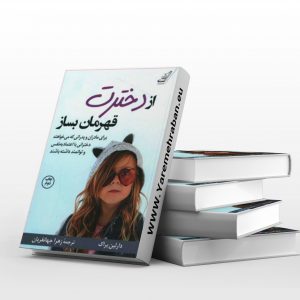

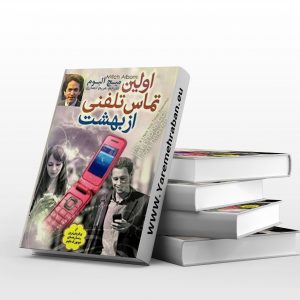

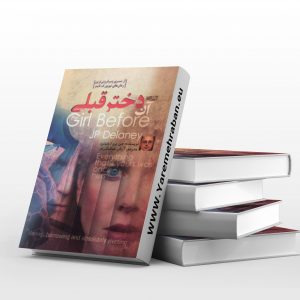
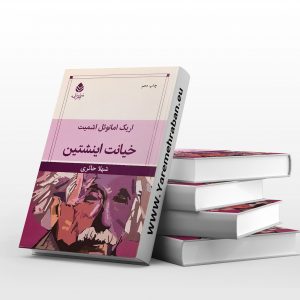
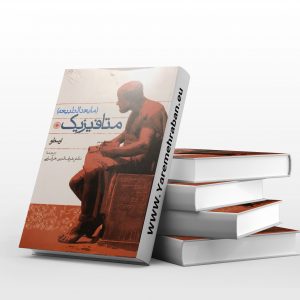

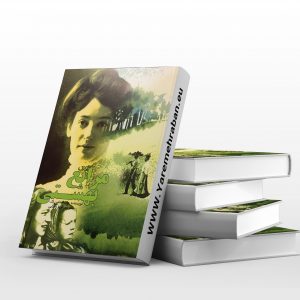

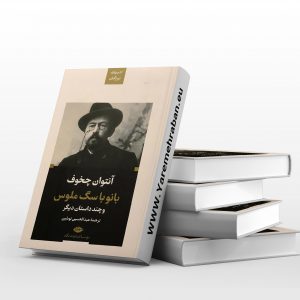
Reviews
There are no reviews yet.